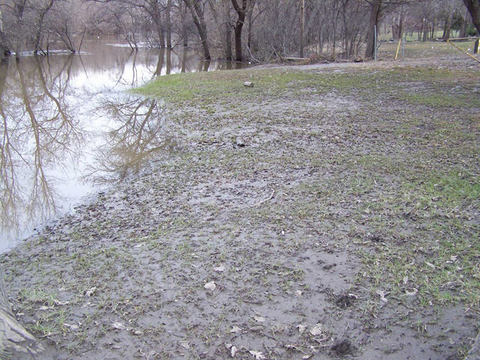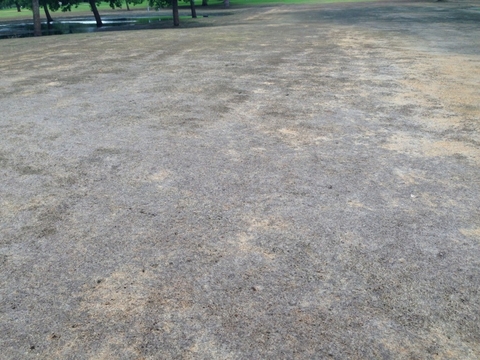Quick facts
-
Sandbag high-risk turf areas to reduce the extent of flooding and buildup of silt.
-
Remove all debris and silt from smothered turf areas as soon as possible.
-
Aerate smothered turf to allow the exchange of oxygen and encourage new growth.
-
Avoid planting perennial ryegrass, as it is generally less tolerant of flooding than other turfgrass species.
-
Consider completely renovating lawns that are not easily repaired.
Lawns can be flooded by heavy rains or overflow of streams and rivers. In early spring, before lawns begin active growth and the ground is thawing, lawn grasses can withstand several days of submersion without being seriously damaged.
During periods of high temperatures and sunlight in the summer, water that ponds on a lawn can cause significant damage or loss even within a few hours.
How does damage occur?
Damage to lawns from flooding can be separated into two main categories:
- Primary damage can be influenced by water temperature and water depth.
- Water temperature is the most important factor determining survival, with turfgrass death occurring in only a few days when water temperatures are 80 degrees F and higher.
- When water temperatures are lower the turf can still die, with lack of oxygen being the primary culprit.
- Secondary damage is associated with sediment buildup, fungal diseases, moss and algae, and weed infestation.
Repair timing
Timing repairs can be difficult. The cool-season grasses that we grow in Minnesota do not establish well in the middle of the summer due to the high heat and diseases that may occur.
If possible, wait to seed until temperatures cool in the early fall around mid-to-late August. Fall-seeded lawns will have a much better chance of a successful establishment.
For short-term recovery, aerate your soil once it is dry and apply light rates of nitrogen-based fertilizer.
Repair for flooding
For flooding, the worst damage is likely to be sediment deposited over the lawn. You may want to re-establish a lawn when silt has completely covered it.
- As soon as the lawn is dry underfoot (this could take several weeks), aerate it by going over it several times with a core-type aerifier. Repeat the process in early September and again the following spring.
- Overseed after aerating, or delay seeding until mid-August through mid-September. Break up aerification cores with a lawn or power rake.
- Sodding can be done throughout the growing season.
- Pre- or post-emergent herbicides may be needed to treat weeds from silt deposits.
Repair for ponding
Ponding occurs where there is poor drainage or depressions in the lawn. Install subsurface drainage to eliminate ponding.
Poor drainage can also be attributed to soil composition have a soil test done before repairing the area. Any soil or amendments added to fill depressed areas should be similar to the existing soil to avoid further problems.
Reviewed in 2024



